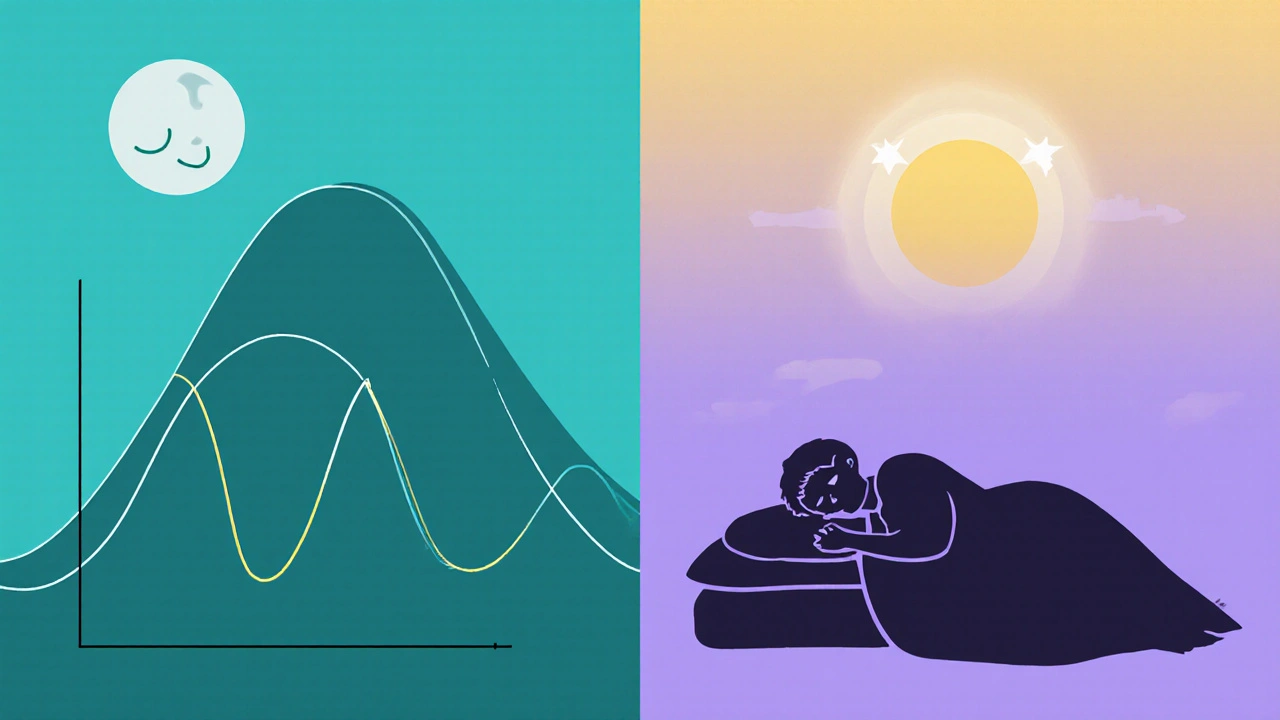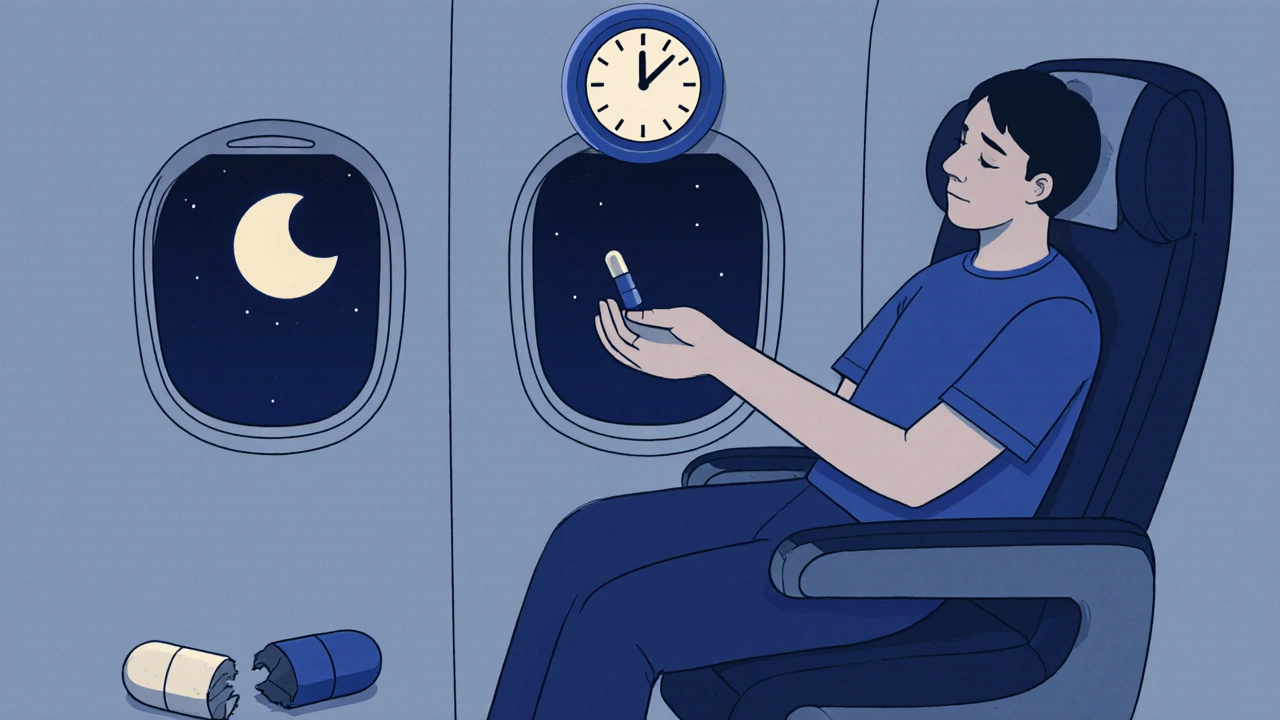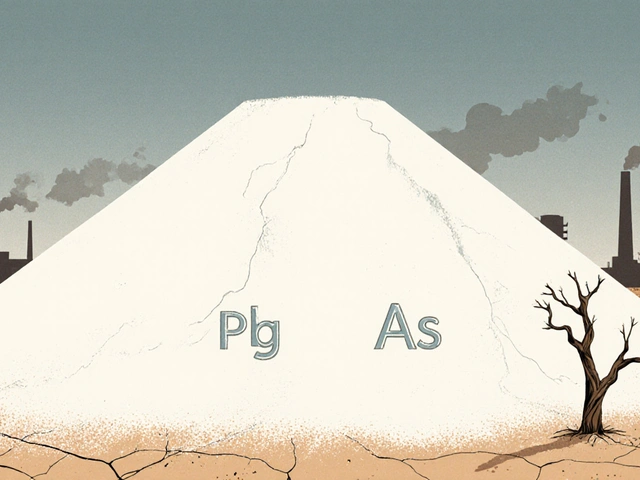When you land in Tokyo after a 14-hour flight from Brisbane, your body still thinks it’s 3 a.m. - even though it’s 8 a.m. local time. You’re exhausted, but your brain won’t shut off. You try to sleep, but you wake up at 3 a.m. feeling wired. You take another pill - the time-released melatonin you bought because it "lasts longer" - and wonder why you feel worse than before.
Most travelers don’t realize that the very thing they think will help - slow-release melatonin - is making jet lag worse. The science is clear: immediate-release melatonin is the only form proven to reset your internal clock. Time-released versions? They confuse your body’s natural rhythm instead of fixing it.
Why Jet Lag Happens (And Why It’s Not Just Tiredness)
Jet lag isn’t just being tired from flying. It’s your circadian rhythm - the 24-hour biological clock that controls sleep, hormones, digestion, and body temperature - being out of sync with the new time zone. When you cross five or more time zones, your body doesn’t instantly adapt. It takes days. And the direction you fly matters.
Eastward travel - like flying from Australia to Europe - forces your body to go to bed earlier than it’s used to. That’s a phase advance. Your body needs to shift its clock forward. Westward travel - say, from the U.S. to Australia - means staying up later. That’s a phase delay. Your body needs to shift its clock backward.
Studies show eastward trips take longer to recover from. You lose about 1.5 days of adjustment per time zone crossed. Westward? About one day per zone. And here’s the kicker: 25% of people crossing eight or more time zones actually adjust in the wrong direction - delaying when they should be advancing, or vice versa. That’s called antidromic adaptation. It’s not rare. It’s common.
How Melatonin Actually Works - And Why Timing Is Everything
Melatonin is your body’s natural sleep hormone. It starts rising in the evening, peaks around 2-4 a.m., and drops off before sunrise. That’s why taking it at the right time matters more than how much you take.
The circadian phase-response curve (PRC) shows that melatonin only shifts your clock if taken during a narrow window - roughly 5 p.m. to 8 a.m. your body’s current time. Outside that window, it does nothing, or even messes you up.
Take it too early? You might delay your clock when you need to advance. Take it too late? You could wake up groggy at 3 a.m. because melatonin is still in your system. That’s why immediate-release melatonin is the gold standard: it spikes quickly and clears out in 40-60 minutes. It gives your brain a clean, precise signal: "It’s time to sleep."
Why Time-Released Melatonin Fails for Jet Lag
Time-released melatonin is designed for chronic insomnia - not jet lag. It’s made to drip melatonin into your bloodstream over 6-8 hours. Sounds helpful, right? Wrong.
Here’s what happens: You take it at 9 p.m. local time, thinking it’ll last all night. But instead of helping your body shift, it keeps flooding your system past sunrise. By 7 a.m., your brain is still getting melatonin signals - but it’s supposed to be wide awake. That’s like trying to turn on a light switch with a dimmer that won’t turn off.
Research from the CDC Yellow Book 2024 and the American Academy of Sleep Medicine says it plainly: slow-release melatonin is not recommended for jet lag. Why? Because it "stays in the system too long and confuses the circadian clock."
A 2019 study in Sleep Medicine found that 3 mg of immediate-release melatonin taken at 10 p.m. local time shifted the body clock forward by 1.8 hours. The same dose of time-released melatonin? Only 0.6 hours. That’s a 67% drop in effectiveness.
And it gets worse. A 2021 study showed 68% of eastward travelers using time-released melatonin reported worse symptoms than those using immediate-release. On Reddit, 78% of users who tried time-released versions said they felt more groggy and took longer to adjust. Amazon reviews for time-released products average 2.8 stars. Immediate-release? 4.1 stars.

What Dose and Timing Actually Work?
You don’t need a high dose. In fact, more isn’t better. Research by Herxheimer and Petrie (2002) found 0.5 mg of immediate-release melatonin was just as effective at shifting your clock as 5 mg. Higher doses might help you fall asleep faster, but they don’t help your rhythm reset faster.
Here’s what works, based on CDC and Mayo Clinic guidelines:
- Eastward travel (e.g., Australia to Europe): Take 0.5-3 mg of immediate-release melatonin 30 minutes before your target bedtime at your destination. Start 1-2 days before you fly, and keep going for 4-5 days after arrival. For 5+ time zones, start with 0.5 mg. For 7+ zones, go up to 3 mg.
- Westward travel (e.g., Europe to Australia): Melatonin isn’t as effective here. Instead, get bright light exposure in the morning and avoid it in the evening. If you use melatonin, take it in the morning - upon waking - for 2-3 days to help delay your clock.
Timing matters more than the pill. If you take it at the wrong hour, even the right dose can make jet lag worse. That’s why apps like Timeshifter - which use your flight path, chronotype, and sleep history to calculate exact dosing times - are used by over 1.2 million travelers.
What About Other Medications?
Some people turn to sleep aids like zolpidem or stimulants like modafinil. These help you sleep or stay awake - but they don’t fix your body clock. You might feel better for a day, but your rhythm stays broken. That’s why business travelers who rely on these drugs often report "crashing" after a few days.
Prescription options like tasimelteon (Hetlioz) are approved for rare circadian disorders, but they’re not better than melatonin for jet lag. Their half-life is still too short for sustained release, and they’re expensive. Melatonin remains the only affordable, accessible, evidence-backed tool.

The Dark Side of Supplements
Here’s something most travelers don’t know: melatonin is sold as a supplement - not a drug - in the U.S. That means the FDA doesn’t test it for purity, potency, or accuracy.
A 2023 FDA warning letter found that melatonin supplements contained anywhere from 83% to 478% of the labeled amount. One product labeled "1 mg" had 4.7 mg. Another said "5 mg" but contained 10.7 mg. That’s dangerous if you’re trying to hit a precise dose for circadian adjustment.
Even in countries where melatonin is regulated, like the EU, only one time-released product (Circadin) is approved - and only for insomnia in people over 55. Not for jet lag. Not for travelers.
What You Should Do Instead
Forget time-released melatonin. It’s not just ineffective - it’s counterproductive.
Here’s your simple plan:
- Buy immediate-release melatonin (0.5-3 mg) from a reputable brand with third-party testing (look for USP or NSF certification).
- Use an app like Timeshifter or Jet Lag Rooster to calculate your exact dosing time based on your flight and chronotype.
- Take it 30 minutes before your target bedtime at your destination, starting 1-2 days before you fly.
- Get bright natural light in the morning (2,000-10,000 lux for 30-60 minutes) and avoid blue light from screens after dark.
- Don’t take it every night. Stop after 4-5 days. Your body will adjust.
Travelers who follow this method adapt in 3-4 days. Those who use time-released versions? They take 5-6 days - and often feel off for longer.
The Future of Jet Lag Management
Researchers are now looking at genetic markers - like the CRY1 gene - that affect how fast your body adjusts. In 2024, a UCSF trial showed some people need to take melatonin up to 2.5 hours earlier or later than average based on their DNA.
But for now, the best tool is still simple: the right form of melatonin, at the right time. No fancy tech. No extended-release pills. Just precision.
The market is shifting too. In 2023, 85% of jet lag-related melatonin sales were immediate-release. By 2030, time-released versions are projected to make up less than 5% of the market. The science has spoken. It’s not about lasting longer. It’s about timing right.
Is time-released melatonin safe for jet lag?
Time-released melatonin is not recommended for jet lag. While it’s safe for short-term use, it disrupts your circadian rhythm by maintaining elevated melatonin levels into the morning - when your body should be producing none. This can cause grogginess, poor sleep quality, and slower adjustment. The CDC and American Academy of Sleep Medicine explicitly advise against it for jet lag.
How much melatonin should I take for jet lag?
Start with 0.5 mg of immediate-release melatonin. Research shows this dose is just as effective as higher doses (like 5 mg) for shifting your body clock. Use 1-3 mg only if you need stronger sleep support, not for better rhythm adjustment. Higher doses don’t speed up adaptation - they just make you sleepier.
When should I take melatonin for eastward travel?
For eastward travel (e.g., Australia to Europe), take immediate-release melatonin 30 minutes before your target bedtime at your destination. If you’re flying to London from Brisbane, and your target bedtime is 10 p.m. London time, take the pill at 9:30 p.m. London time. Start 1-2 days before departure and continue for 4-5 days after arrival.
Can I use melatonin for westward travel?
Yes, but it’s less effective. For westward travel (e.g., Europe to Australia), melatonin is best taken in the morning - right after you wake up - for 2-3 days. This helps delay your internal clock. Light exposure is more important here: get bright sunlight in the morning and avoid it in the evening.
Do I need to take melatonin every night?
No. Melatonin is only needed for 3-7 days - just long enough for your body to adjust. Taking it longer won’t help and may interfere with your natural rhythm. Stop once you’re sleeping well at the new time without it.







Debanjan Banerjee
November 20, 2025 AT 22:09Finally, someone broke this down properly. I used time-released melatonin for my Dubai trip last year and felt like a zombie for five days. Switched to 0.5mg immediate-release at 10:30 p.m. Dubai time - slept like a baby by day two. No more guessing. Just science.
Steve Harris
November 21, 2025 AT 13:42This is the most balanced, evidence-based take on jet lag I’ve ever read. I’ve been recommending this exact protocol to my patients for years - but nobody listens until someone drops a 2000-word deep dive with CDC citations. Thank you. Seriously.
Michael Marrale
November 22, 2025 AT 05:41Wait… so you’re telling me the FDA doesn’t regulate melatonin? That’s why my bottle says 5mg but I feel like I’ve been drugged by aliens. I’ve been taking it since 2018 and I swear they’re using it to track our dreams. They’ve been testing circadian manipulation since the 60s - this is all a cover-up. I’ve seen the documents.
David vaughan
November 22, 2025 AT 13:33I just… I just wanted to say thank you. 😊 I’ve been struggling with jet lag since I started international consulting, and I thought I was just ‘bad at sleeping.’ Turns out I was using the wrong kind of melatonin AND taking it at 8 p.m. instead of 10 p.m. I’m trying the 0.5mg plan next week - fingers crossed 🤞🤞🤞
David Cusack
November 22, 2025 AT 15:01While your empirical data is not without merit, one must question the generalizability of a 2019 Sleep Medicine study predicated on a sample of Western travelers with no consideration for chronotype diversity, cultural sleep norms, or the placebo effect of branded apps like Timeshifter - which, incidentally, is funded by a pharmaceutical subsidiary. The entire premise is reductionist.
Willie Doherty
November 22, 2025 AT 20:19Let’s be honest - this entire post is a marketing funnel disguised as science. You cite Reddit stats, Amazon reviews, and a CDC Yellow Book update that’s not even peer-reviewed. Meanwhile, the 2022 meta-analysis in The Lancet Sleep showed no significant difference between immediate and extended-release melatonin when controlling for light exposure. You’re cherry-picking to sell a product.
Darragh McNulty
November 24, 2025 AT 16:06Broooooo 🙌 I was skeptical too until I tried this. Just 0.5mg, 30 mins before target bedtime - boom. No grogginess. No 3 a.m. panic. I’m telling my whole team. You just saved my Q3 business trips. 🙏✈️
Cooper Long
November 25, 2025 AT 06:37It is noteworthy that the regulatory distinction between supplement and pharmaceutical in the United States has led to a public health dilemma of considerable magnitude. The absence of standardized dosing protocols renders consumer reliance on melatonin an act of pharmacological faith rather than clinical intervention.
Sheldon Bazinga
November 27, 2025 AT 02:37lol so you’re telling me the whole time-released thing is a scam? no wonder my 5mg pills make me feel like i got hit by a truck. i thought i was just old. also why is everyone in europe so obsessed with sleep? we got coffee here, buddy. 🇺🇸
Sandi Moon
November 27, 2025 AT 06:00Of course the market is shifting - because the pharmaceutical-industrial complex needs to sell you something new. The same people who told you to take 5mg are now telling you 0.5mg. They’ve been lying to you since 1998. And now they’re selling you an app. What’s next? A $200 circadian wristband that beeps at you?
Kartik Singhal
November 29, 2025 AT 03:11Bro this is just another western capitalist lie. In India we just drink chai and sleep when tired. Who needs apps? Who needs science? My grandpa never heard of melatonin and lived to 98. You’re overcomplicating life. Also, why are all these studies from the US? They don’t even know what real jet lag is.
Chris Vere
November 30, 2025 AT 13:14Interesting. I’ve been flying between Lagos and Atlanta for a decade. I don’t use melatonin at all. Just walk outside at dawn, avoid screens after sunset, and let my body figure it out. Sometimes the simplest things are the most powerful. The body knows. We just forget to listen.